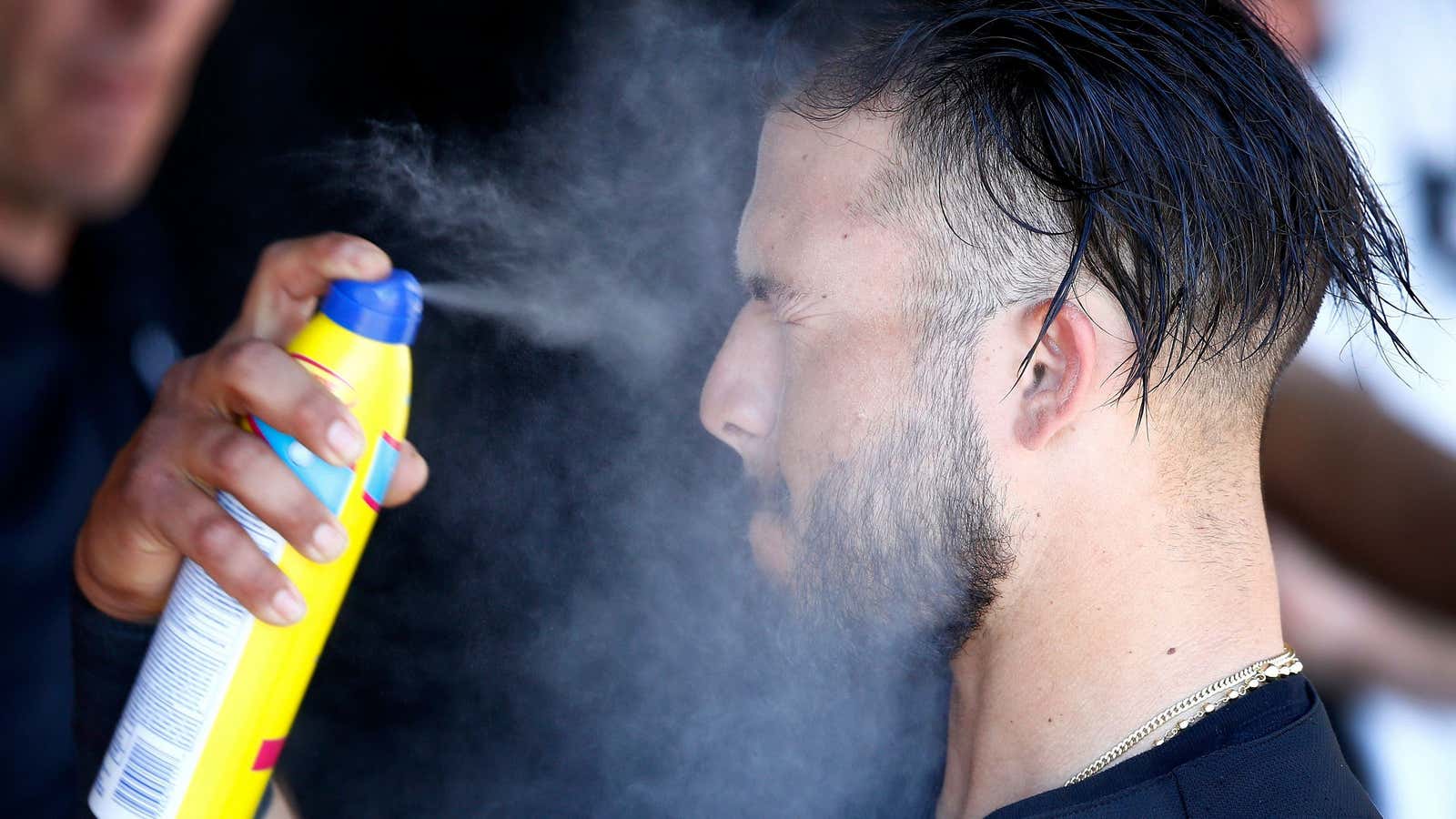Oxybenzone is the main active ingredient in most sunscreens. But the same mechanism that makes it filter out ultraviolet light and prevent sunburns in humans makes it lethal to baby coral. Basically, the sunscreen ingredient is shoving coral reefs off the ledge on which they’re already teetering.
Now Hawaii, which welcomes around 9 million sunscreen-slathered tourists a year, may become the first US state to ban the ingredient. The state legislature passed a bill to ban the over-the-counter sale of the more than 3,500 oxybenzone products on the market this week (along with products that contain octinoxate, another common sunscreen ingredient). The bill has been in the works for longer than a year, and now awaits a signature from the state governor. Hawaii residents and visitors would only be able to buy sunscreen with the ingredients with a prescription from their doctor.
Sunscreen industry groups aren’t pleased. The bill would ban “at least 70% of the sunscreens on the market today, based on weak science blaming sunscreens for damage to coral reefs,” the Consumer Healthcare Products Association, which includes members like Johnson & Johnson, said in a statement obtained by the Washington Post. Bayer, which manufactures sunscreens by Coppertone, said that the bill was “at odds with skin cancer prevention efforts.”
There are a range of mineral-based, US Food and Drug Administration-approved sunscreens available on the market which contain either titanium dioxide or zinc oxide. Plus, there are plenty of chemical sunscreens that don’t contain either oxybenzone or octinoxate.
Coral reefs are having a terrible time. Sea temperatures are rising past what many coral seem able to tolerate, and several consecutive mass die-offs in the Great Barrier Reef has lead some scientists to consider the reef past saving, barring drastic action to halt climate change.
In 2015, a team of scientists including two from the US National Oceanic and Atmospheric Administration published a paper concluding that oxybenzone that comes off swimmer’s bodies in the ocean, or is washed off in the shower—and eventually discharged in the ocean as sewage—was making juvenile coral near Hawaii and the US Virgin Islands more susceptible to bleaching. Coral bleach when the water warms to a temperature above what they can tolerate. The stressed coral polyps react by expelling the algae that live on them—and which give coral reefs their color, and act as their primary energy source. Naked of their algae, the coral polyps become transparent, appearing white due to the calcium structure behind them. Eventually, without the algae, they starve.
In the study, coral exposed to oxybenzone had a higher rate of bleaching than those that weren’t. The oxybenzone also damaged their DNA, impacted their hormonal cycles, and lead to “gross deformities” in baby coral.
“It causes weird deformities in soft tissue and also causes the coral larvae to encase itself in its own skeleton, in its own coffin,” Craig Downs, the director of the Haereticus Environmental Laboratory and one of the authors of the 2015 study, told the Guardian at the time.
A 2008 paper found the ingredient also harmed coral by filtering out UV light, which starts a chain of events making it easier for viruses to attack coral.
All these effects weaken reefs, which in turn “threatens the resiliency of coral reefs to climate change,” the authors of the 2015 paper wrote. Downs, in speaking to the New York Times, took it a hair farther, calling the sunscreen chemicals “bigger than climate change” in terms of the havoc they wreak on reefs. But reefs can’t choose one threat over the other, and the ever-present combination, it seems, is pushing them off the ledge.
